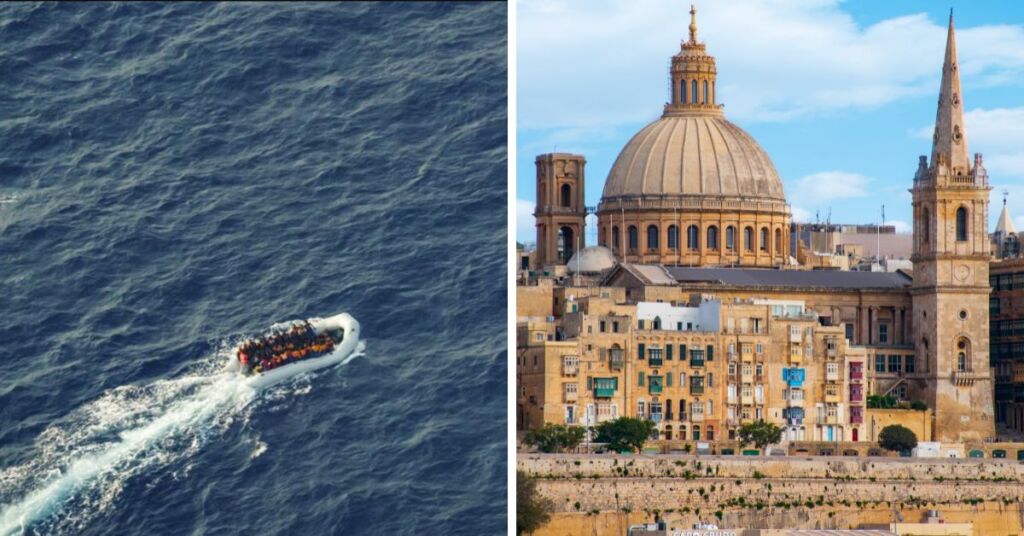102 Arrivals This Year: Number Of Refugees Entering Malta Continues To Drop

102 refugees have entered Malta since the start of 2024 – a dramatic decrease from the last couple of years.
Data tracked by the United Nations High Commissioner for Refugees shows the number of refugees entering different regions, providing live updates as well as congregated data of past years. The number of such arrivals in Malta has dropped consistently since 2021.
In all of 2023, 380 refugees arrived in Malta by sea, including three medical evacuations. The numbers have substantially gone down with 2022 recording 444 refugees, 2021 recording 832, and 2020 recording 2,281.
Between January and March of this year, the country registered 68 arrivals by sea. Between April and June, there were no new arrivals and since June, another 34 have entered.
At present, the UNHCR has details on the first 68 arrivals which all departed from Libya but were not necessarily Libyan.
32% (22 individuals) were Pakistani, 24% (16) were Syrian, 21% (14) were Bangladeshi, 12% (8) were Eritrean, 4% (3) were Ghanaian, 3% (2) were Ethiopian, and the other 4% (3) were made up of other nationalities. This marks a slight change from the previous year’s nationalities with 2% of arrivals being Bangladeshi, 14% being Syrian and 7% being Guinean.
Meanwhile, 63 of the 68 arrivals (93%) registered in the first half of this year were males, one person (1%) was female, and four (6%) were alleged unaccompanied minors at the time of disembarkation.
Anyone claiming to be an unaccompanied child then underwent age assessment procedures at the Agency for the Welfare of Asylum Seekers.
As of 31st March, 273 individuals resided in open reception centres in Malta which stands at a capacity of 2,964 people, therefore the occupancy rate stood at 9%. An additional 236 individuals resided in the community and benefited from social assistance. Some 87% (229 individuals) of the population in the reception centres were adult males, constituting the majority, of them 183 individuals resided in the Ħal Far Tent Village.
In the first quarter of this year, the International Protection Agency processed 163 first-time applications and issued 427 decisions. The recognition rate (grants of Refugee Status or Subsidiary Protection) stood at 10% (45 individuals), compared to 15% (313) in 2023, while the rejection rate stood at 21% (90 individuals) compared to last year’s 35% rejection rate (714). Temporary Humanitarian Protection (THP) was granted to three people.
Otherwise closed cases stood at 67% (287 cases) of total 427, referring to decisions comprising of administrative closures (35), Dublin closures (34), applications that are explicitly (12) or implicitly withdrawn (135) and inadmissible applications (37).
In the second quarter, the agency received 111 first-time applications and issued 391 decisions. The recognition rate stood at 10% (39 individuals) while the rejection rate stood at 15% (58 individuals). Temporary Humanitarian Protection (THP) was granted to two people.
The proportion of closed cases stood at 74% (290 cases) of total 391, including decisions comprising of administrative closures (41), Dublin closures (31), applications that are explicitly (13) or implicitly withdrawn (159), inadmissible applications (22) and withdrawal of both THP and Refugee status (5).
The average waiting time for an initial approval or rejection issued in the first two quarters was two years.
In the first quarter, International Protection was granted on average after two and a half years for Syrians and three years for Eritreans. This sped up in the second quarter with an average of one and a half years for Syrian nationals and two years for Eritrean nationals.
Meanwhile, in 2024, the country has issued almost 200 Temporary Protection Certificates to people fleeing Ukraine, granting over 2,700 of such certificates since the outbreak of the war in February 2022.
The Malta UNHCR branch is built on the premise that the island is primarily responsible for managing asylum and refugee affairs in the country so it mainly monitors the situation and aids in discussion, advocates for a protection-sensitive system and increases general awareness.
Why do you think these numbers have decreased?
